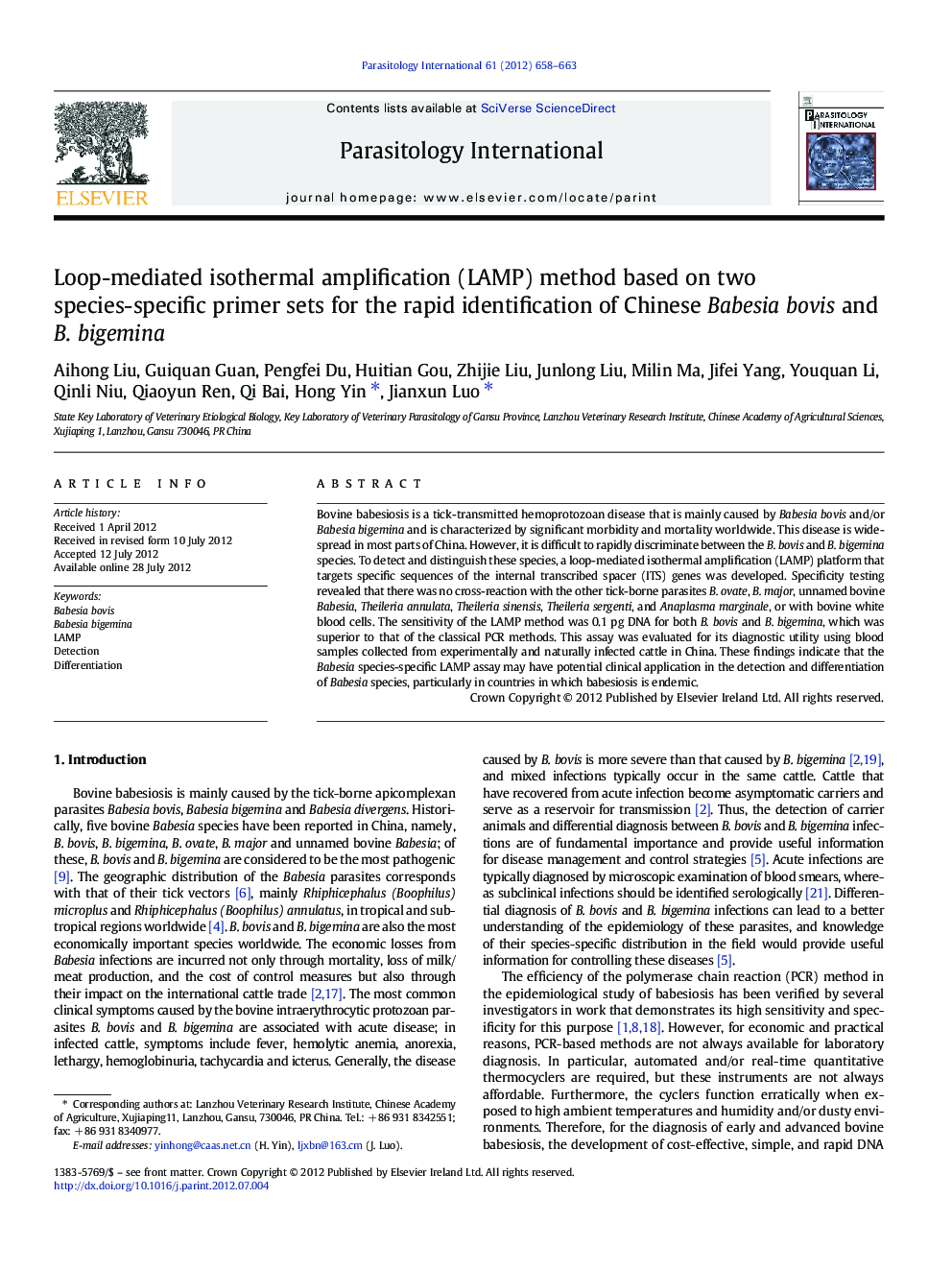| Article ID | Journal | Published Year | Pages | File Type |
|---|---|---|---|---|
| 6137099 | Parasitology International | 2012 | 6 Pages |
Bovine babesiosis is a tick-transmitted hemoprotozoan disease that is mainly caused by Babesia bovis and/or Babesia bigemina and is characterized by significant morbidity and mortality worldwide. This disease is widespread in most parts of China. However, it is difficult to rapidly discriminate between the B. bovis and B. bigemina species. To detect and distinguish these species, a loop-mediated isothermal amplification (LAMP) platform that targets specific sequences of the internal transcribed spacer (ITS) genes was developed. Specificity testing revealed that there was no cross-reaction with the other tick-borne parasites B. ovate, B. major, unnamed bovine Babesia, Theileria annulata, Theileria sinensis, Theileria sergenti, and Anaplasma marginale, or with bovine white blood cells. The sensitivity of the LAMP method was 0.1Â pg DNA for both B. bovis and B. bigemina, which was superior to that of the classical PCR methods. This assay was evaluated for its diagnostic utility using blood samples collected from experimentally and naturally infected cattle in China. These findings indicate that the Babesia species-specific LAMP assay may have potential clinical application in the detection and differentiation of Babesia species, particularly in countries in which babesiosis is endemic.
Graphical abstractDownload full-size imageHighlights⺠LAMP for detection and differentiation of Babesia bovis and B. bigemina was developed. ⺠The primer of LAMP assay was designed on the basis of internal transcribed spacer. ⺠The performance was evaluated by comparison with the PCR and Microscopy method. ⺠383 field samples were detected of B. bovis and B. bigemina infection in China. ⺠Primary epidemiological data of B. bovis and B. bigemina in China was obtained.
